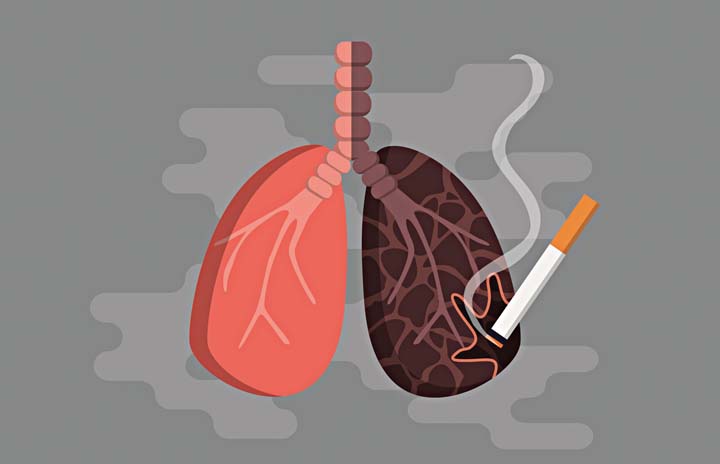
[ad_1]
EVERY year, more Filipinos are dying of lung cancer. In fact, lung cancer leads among the top 5 cancers leading to death in the country, according to the Philippine Society of Medical Oncology (PSMO).
Lung cancer also ranks as the number 1 cause of cancer among men in the country, the Philippine Cancer Society Inc. (PCSI) claims. “Lung cancer is killing more Filipino men than ever before,” the society deplores.
 Among those who died of lung cancer include Cirio H. Santiago, producer, director and screenwriter; Lou Salvador Jr., touted to be the James Dean of the Philippines; Eddie Rodriguez, an award-winning actor and director; and broadcast journalist Angelo Castro Jr.
Among those who died of lung cancer include Cirio H. Santiago, producer, director and screenwriter; Lou Salvador Jr., touted to be the James Dean of the Philippines; Eddie Rodriguez, an award-winning actor and director; and broadcast journalist Angelo Castro Jr.
Women are not spared from lung cancer. Sen. Miriam Defensor Santiago was among those who died of it. In the Philippines, lung cancer is the third-leading cause of cancer among women—after breast and cervix. The PMSO says that out of 100,000 Filipino women diagnosed with lung cancer, 2,500 of them die.
Every year, almost 2 million people around the world are diagnosed with the disease. “Only about 250,000 of them will remain alive five years later,” claimed Dr. Ted Hamilton, medical director of Florida Hospital Central Care in Orlando.
Lung cancer typically doesn’t cause signs and symptoms in its earliest stages. Signs and symptoms of lung cancer typically occur only when the disease is advanced. The Mayo Clinic says signs and symptoms of lung cancer may include: A new cough that doesn’t go away; coughing up blood, even a small amount; shortness of breath; chest pain; hoarseness; losing weight without trying; bone pain; and headache.
Like most cancers, no one really knows what causes lung cancer. However, there are known factors that are associated with an increased risk of lung cancer. Among these are dietary factors (deficient in vitamins, high in cholesterol), occupational carcinogens such as industrial chemicals (asbestos, arsenic, chromates, nickel and chloromethyl ethers), ionizing radiation, exposure to radon gas (radioactive gas, found in increased amounts in mines), and genetic factors (inherited predisposition to developing lung cancer).
“Air pollution causes about 1 percent of lung-cancer cases,” notes The Merck Manual of Medical Information. One of the most common forms of air pollutants is the suspended particulate matter (SPM), or those tiny solid particles dispersed from pesticides, asbestos and thousands of other products.
Studies of the American Cancer Society directly link the exposure to SPM with lung cancer. For example, if the concentration of particles in the air increases by only 1 percent, the risk of developing a lung cancer increases by 14 percent.
But smoking,particularly of cigarettes, is by far the main contributor to lung cancer. In fact, lung cancer was uncommon before the advent of cigarette smoking; it was not even recognized as a distinct disease until 1761.
In Germany in 1929, physician Fritz Lickint recognized the link between smoking and lung cancer, which led to an aggressive anti-smoking campaign. “The British Doctors Study,” published in the 1950s, was the first solid epidemiological evidence of the link between lung cancer and smoking.
“Lung cancer is almost exclusively found in smokers,” the Mayo Clinic points out. “Men who smoke are 22 times more likely to develop lung cancer than men who don’t smoke. Women who smoke are 12 times more likely to develop lung cancer than women who don’t smoke.”
Cigarette and cigar smoke contain more than 40 carcinogens or cancer-causing chemicals. Among these are tar, nicotine, cyanide, formaldehyde, methanol, ammonia, acetone, carbon monoxide and nitrogen oxide.
Tar is a dark, sticky substance condensed from the chemical particles in cigarette smoke. A one-pack-a-day smoker collects about one cup of tar in his lungs in a year, according to the PCSI publication, Lung Cancer and Smoking. “The tar from cigarette smoke affects the defenses of the lungs, neutralizing them so that they can’t do their work,” it explains.
The rise of lung cancer in the Philippines is attributed to the high smoking rates, particularly among men. The Department of Health reports that a Filipino smoker puffs 1,073 cigarette sticks annually.
The most recent National Nutrition and Health Survey found that 35 out of 100 Filipinos are smokers. About 56.3 percent of Filipino males are smokers while 12.1 percent of Filipino women smoke.
Aside from lung cancer, cigarette smoking is also associated with cancers of the tongue, mouth, upper respiratory tract, oral cavity, esophagus, pancreas, kidney and urinary bladder.
“Treatment for lung cancer is very expensive,” said Dr. Dennis Tudtud, PSMO president. “More often than not, a patient can’t afford the prohibitive cost.”
The treatment of lung cancer depends upon the type of tumor, the stage of the disease at diagnosis and the general fitness of the patient. If the tumor is small, and there is no evidence of spread to local lymph nodes, surgical removal of the tumor is usually performed.
Chemotherapy is used in all other stages, and roughly 75 percent of tumors will respond to it. In patients who decline operation, or who are not fit for surgery but still in stages I, II, and IIIA, high dose radiotherapy is the treatment of choice. It involves bombarding the lung tumor with high-dose radiation aiming to kill all the cancer cells.
“Lung cancer has a poor prognosis,” the Merck Manual reminds. “On average, people with untreated lung cancer survive eight months. Overall, even with therapy, the five-year survival rate is only 13 percent.”
Source link